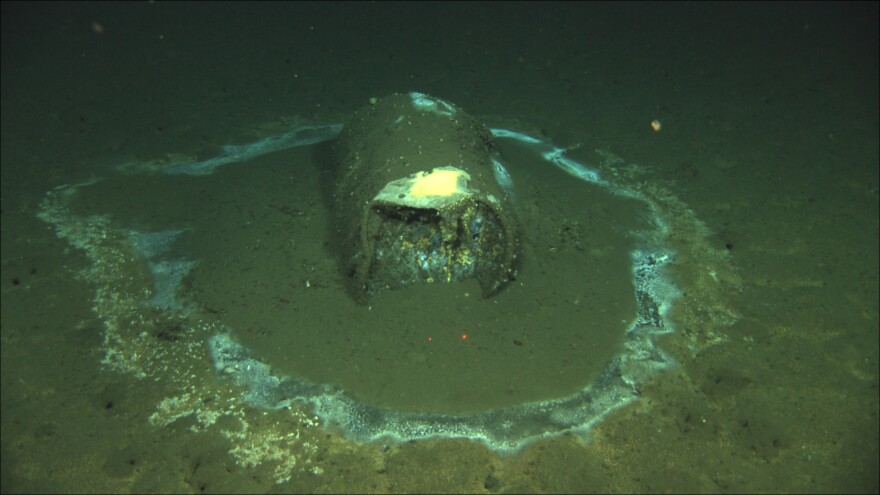Truth matters. Community matters. Your support makes both possible. LAist is one of the few places where news remains independent and free from political and corporate influence. Stand up for truth and for LAist. Make your year-end tax-deductible gift now.
Toxic waste dumped decades ago has drastically altered life on SoCal's sea floor, study finds

Between the 1930s and 1970s, companies dumped barrels of toxic waste, including DDT, off the coast of Southern California, from Santa Cruz Island south to Mexico.
The revelations came to light several years ago, and since then researchers have been investigating the various sites using remotely operated vehicles thousands of feet beneath the surface.
There have long been questions about a specific subset of barrels that looked like they were surrounded by concrete and white halos. On Tuesday, researchers from the Scripps Institution of Oceanography published a paper in the Proceedings of the National Academy of Sciences with a potential explanation.
They believe that the barrels contained caustic waste so alkaline that it changed the chemistry and the microbial makeup of the organisms on the seafloor. What that waste is remains a mystery.
Samples taken from around the barrels showed pH levels as high as 12 (normal is 7 to 8) and were dominated by alkalophilic bacteria adapted to high-pH environments, like those around hydrothermal vents. Colonies of bacteria farther from the barrels were far more diverse and consistent with what’s been found in other parts of the area.
“ We've created these naturally occurring extremophile environments in these little patches in the ocean wherever these barrels landed that had the caustic waste,” said Paul Jensen, professor of microbiology at Scripps and co-author of the study.

When researchers tested pieces of the concrete-looking stuff, they discovered it was brucite, or magnesium hydroxide, and that the white halos are calcium carbonate, both of which form in high-pH environments.
They estimate it could take thousands of years for these changes to resolve.











